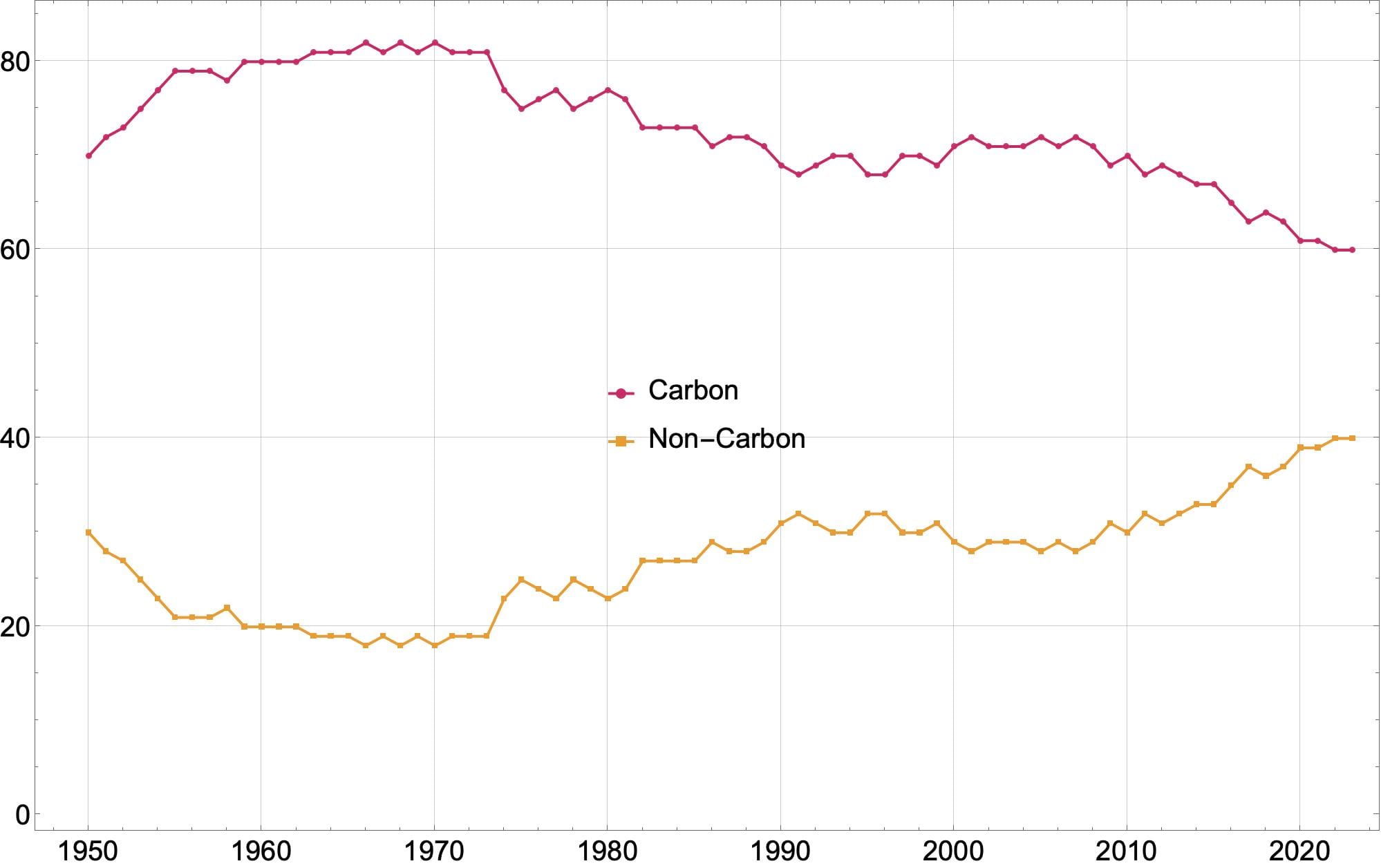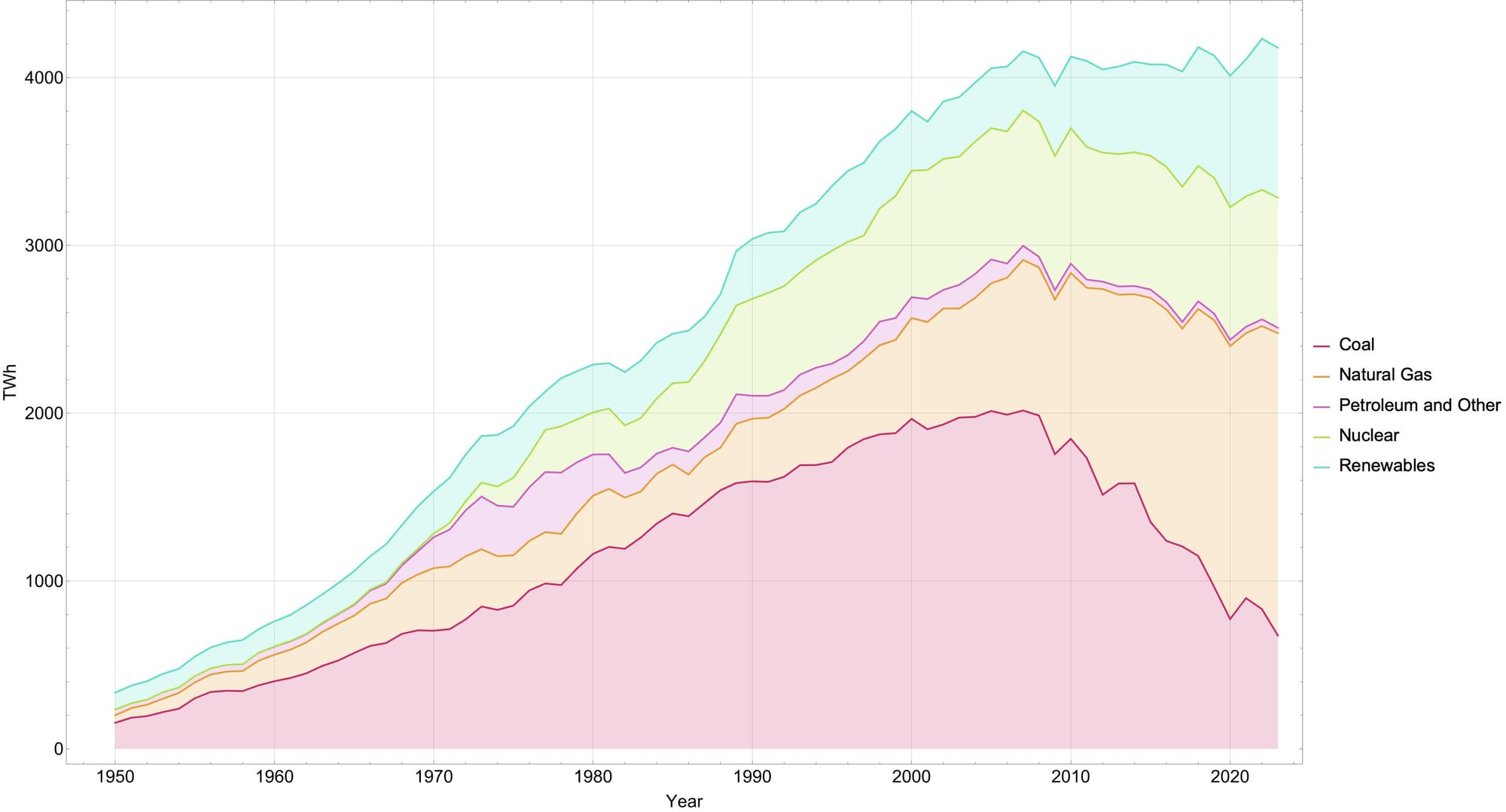A Month Where Fossil Fuels Fell Behind
"Non-carbon" sources supplied more than half of US electrical power in March

This isn't unexpected. In 1970, fossil fuels generated over 80% of US electricity, but in 2023, this was down to about 60%. Historically, the carbon-to-non-carbon balance of power sources has converged as the share of carbon-based power diminishes, as shown in Figure 1.1 This trend is obvious, evident for decades. In March, 2025, the two lines crossed.
We don't have good numbers for this particular dataset for 2024 yet, in part because the US energy-reporting group, the EIA (Energy Information Administration) has been suffering from layoffs and disorganization.3 Even so, a close study of the figures that are available show the trend from Figure 1 will have persisted through 2024.
The reasons for the rise and fall of each source are complex, with lots of contributing factors. As overall energy demand increases, coal generation drops steeply, but natural-gas energy and wind and solar increase.2 A graph that stacks the energy sources shows how each helps satisfy growing energy demand:

The EIA (Energy Information Administration), the official energy-tracking authority in the US, has yet to confirm the March 2025 numbers. Like many US federal agencies, they are operating under "difficult circumstances" in 2025.3
But even so, Ember's estimate makes sense. March is usually a good month for solar and wind in the Northern Hemisphere. To refactor an old saying, "March comes in like Wind and goes out like Solar."
Don't expect this one-month energy balance to be permanent...but it won't be the last time it happens, either.
Private and government funds committed in previous years are still being spent and capacity is still being added. Demand remains high, at least partially driven by new-technology companies that are concerned enough about the environment to specify energy sources in contractual requirements.4
In spring, hope is easy.
Reading
- “Electricity in the U.S. - U.S. Energy Information Administration (EIA).” Accessed May 4, 2025. https://www.eia.gov/energyexplained/electricity/electricity-in-the-us.php.
- Ember. “Fossil Fuels Fall below 50% of US Electricity for the First Month on Record.” Accessed May 4, 2025. https://ember-energy.org/latest-updates/fossil-fuels-fall-below-50-of-us-electricity-for-the-first-month-on-record.
- Giacobone, Bianca. “EIA’s Long-Awaited Annual Report Released ‘under Difficult Circumstances.’” Latitude Media, April 18, 2025. https://www.latitudemedia.com/news/eia-long-awaited-annual-report-released-under-difficult-circumstances/.
- IEA. “Renewables - Energy System.” Accessed May 4, 2025. https://www.iea.org/energy-system/renewables.
